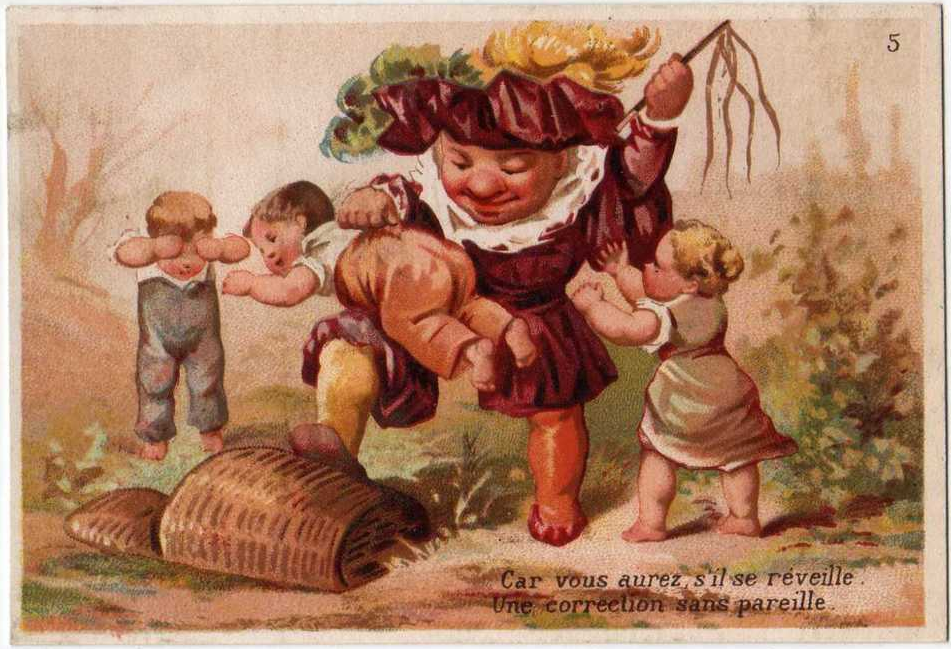Santa Claus has become the dominant international figure of the holiday season. He might well be deemed the headline act, but the character arose from a synthesis of historic, folk and religious traditions stretching back hundreds of years. There’s a mind-boggling number of variations on the character throughout history and barely any country opted for the same iteration or set of customs. One of the craziest without a doubt is northern and eastern France’s Le Père Fouettard (Father Whipper), a sort of anti-Santa.
Across December and into January a host of traditions continue while, not exactly flying in the face of what has become a largely secularised form (Santa Claus nor St. Nicholas has anything to do with the Nativity Story), but very much invested in their own region’s take on the rites of winter, gift-giving and folkloric heritage. Ironically perhaps, our Yuletide story begins in Turkey. For one very important date in the run up to Christmas is the feast day of St. Nicholas (270-343 AD) on 6 December. Born to Greek parents on the southern coast at Patara, the 4th century Bishop of Myra became known and venerated as the patron saint and protector of children.

Across Europe, traditions have that monstrous beings accompany St. Nicholas on his rounds, either as mismatched buddy cop movie pairings (Krampus, Necht Ruprecht, Schmutzli) or as stand-alone villains (such as Austria’s witch Frau Perchta and Iceland’s feline menace, Jólakötturin). Like mobsters doing their boss’s dirty work, Krampus and Le Père Fouettard set out into the cold, cold December night to deal with the kids who have been naughty. They’re more likely to deck the halls with Holly’s bowels than boughs of holly. Forget kindly elves, a jolly fat man with a great big bushy beard, red-nosed reindeers and magical sleighs. Children are given a choice: presents or a sound beating with a bag of ashes (as one strand of the tale goes). If you’ve given too much lip to your folks over the year or don’t say your prayers, it’s possible an evisceration is all you’ve got to look forward to. As coercion tactics go, it’s better than the carrot and stick method, this one basically terrifies you into being good.
In Nord-Pas-de-Calais, Lorraine and southern Belgium (Wallonia), on the night of 5 December Saint Nicholas leaves chocolates and sweets in shoes for the ones who have said their prayers, been good to their parents and done their devoirs (homework) all year round. While Krampus and Black Peter (Zwarte Piet) have featured in recent movies (2015’s Krampus, 2010’s Sint), the story of Le Père Fouettard is a whole other level of crazy and vicious. Not many (read: any) seasonal tales centre on cannibalism, infanticide and zombie kids. But this one does.

So how does a creepy figure with a creepier name – Father Whipper? – fit into the St. Nicholas tradition? There are several origin stories that have become popularised. One is entirely apocryphal and the other is also perhaps fictional, but has its roots in a 16th century medieval siege in the eastern city of Metz. Both are medieval in origin.
The first, which started to be told around 1150, involves an evil butcher who kidnapped three lost children, murdered them by slitting their throats, carved the meat up and put it in a salting tub. Alas, St. Nicholas turned up at the door and the butcher attempted to ingratiate himself to his saintly visitor by offering him his best meat. Instead, Saint Nicholas resurrected the boys from the dead and sends them back to their parents. Seeing an opportunity for the butcher to repent his sins, the butcher became Father Whipper, a sort of eternal servant, who basically acts as the bad cop to Saint Nicholas’s good cop.
Another interesting variant on Father Whipper relates to the 1552-53 Siege of Metz, part of the war between France’s Henry II and the Holy Roman Empire. The fighting lasted from 1551-1559. During the festive period, locals decided to burn an effigy of the Holy Roman Emperor, Charles V, and dragged it through the streets. A group of tanners created the Father Whipper character and based his physical appearance on the burnt effigy.

So why the de Sade-like name ‘Father Whipper’? Le Père Fouettard is often depicted or described as a dishevelled-looking brute in black robes, either a black or red beard, who carries a martinet (a scourge-style whip) ready to dole out beatings to naughty kids. He looks like something from a horror movie and is very much the stuff of nightmares. But really, it’s the idea of not getting gifts from St. Nicholas which is the overriding emotion. Imagine how left out you’d feel, if you got a lump of coal and all your friends are in the grip of a sweet sugar rush?
There is a cultural, social and religious through-line in all these folk traditions: Toe the line, say your prayers, be good to your parents and you’ll be rewarded. If not … you’d better watch out!
For more on curious Christmas traditions, pick up the new issue of All About History or subscribe now and save 25% off the cover price.
Sources
